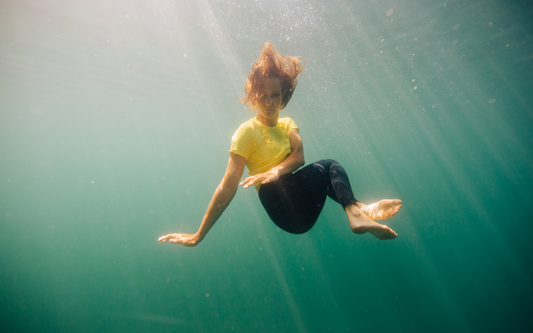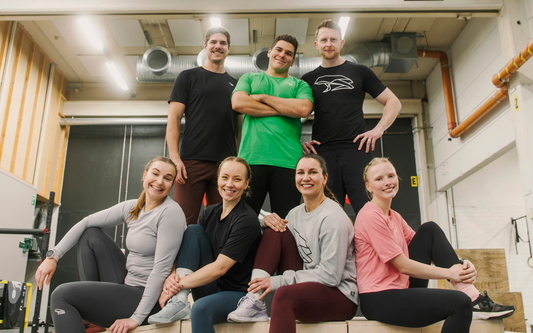The plastic discussion is very polarising, and it mainly concentrates on highlighting the problems while not finding solutions. Is it right to put the blame on plastics, and could we save the planet by living a zero-waste plastic-free lifestyle? If plastic is the bad guy, why was it invented, and why are we still using it today?

In the book Hyvä, paha muovi (Good, bad plastic), it was pointed out that many climate organisations or people writing about plastic don’t necessarily have the right resources or expertise in the material technology, and this leads to lots of misinformation about plastics. Many people speaking about their zero waste lives actually include only a fraction of the whole plastic talk to their content. We wanted to make some sense of the plastic debate around us, so we did a lot of reading, and created a few articles for our Népra blog Speak Of The Frog.
Plastic was invented 100 year ago to replace many natural materials because many wild animals were endangered. Did you know that billiard balls and piano keyboards used to be made of elephant tusks? [1] Not so cool, huh? The 60s and 70s were the “golden times” for plastic, and only through the 80s did we begin to apply a more realistic approach on plastic and started to reconsider where it functions as a more appropriate material in various industries[1]. To be completely honest, even though it is hard to admit, plastic is still often the best and eco-friendliest option out there!
At first, plastics were bio-based but the availability and sufficiency of oil replaced the bio-based plastics quickly. Also, as a material plastic is practical, durable, light, inexpensive, and easy to shape. For example, plastic parts in cars and aircraft have made the vehicles much lighter and this in turn has reduced the amount of fuel required. [1,2]

Raw material for plastic is sourced from the oil refining process. Earlier, the raw material was a by-product of the oil industry making the environmental burden of plastic minor. At the moment, 4% of the oil produced is enough to cover the global plastic needs. [1]
We also must remember that manufacturing any type of material, be it plastic, glass, ceramics, metal, even paper, has a negative impact on the environment. [2] For this reason, it is important to consider the whole life cycle of an item, and look for the best possible fit from the ecological, economical, and social perspectives in each case. The most important factors are the efficient use of raw materials, minimising the costs to the environment, and not to forget about the end use of an item as part of the design process. [1]
Plastics are such a big part of our modern daily lives that we don’t recognise all plastic products around us to be plastic. Based on the discussions about single-use plastic, all types of plastics have become evil. However, without plastic our level of wellbeing would sink. Plastic parts and products are everywhere: in our bodies, homes, commodities, clothing, infrastructure, and even in space. Plastics have their time and place in many areas such as packaging, building, healthcare, aerospace, electronics, textiles, and as plastic commodities. [1]

Even though single-use plastic should be avoided in everyday lives, in hospitals they guarantee the high level of hygiene and safety we have come to expect in the modern day. [1,2] For example, transporting blood in a plastic vial instead of in a glass vial has increased the safety of blood transfer. [2] Additionally, as long as we don’t grow our own food in our backyards and gardens, plastic packages can prolong the lifespan of food products, and ensure higher levels of hygiene and food safety during transportation and warehousing. [1]
The amount of plastic in the world has been heavily increased. Since inventing plastic, 8.3 milliard tons of plastic has been produced globally. To add some significance to this figure, half of that amount has been produced in the last 13 years. [1] This could be somewhat acceptable if most of the plastics would be recycled and reused over and over again. The best thing about plastic is that theoretically we could recycle it endlessly without any signs of dwindling quality.
However, from this 8.3 milliard tons:
-
5.8 milliard tons ends up as waste, and from this:
-
9% is recycled
-
12% is burned to energy
-
79% has ended up in landfills or being left in the environment[1]
If this goes on, by 2050, 12 milliard tons of plastic waste will be in landfills or just left floating on lying in the environment. [1]

Seeing these numbers, it is easy to make a conclusion that we need to change how we use plastic, or stop using it altogether. However, there are lots of other factors that need to be taken into consideration. If we consider the whole lifecycle of plastic, the environmental impact is smaller than it is for paper and carton. Replacing plastic with other materials increases the environmental effect 2.7 times. [1]
Any type of material becomes an issue in a foreign environment, so it follows that plastic becomes a real problem when it ends up being disposed of incorrectly in the environment. It causes a threat to the whole ecosystem. All types of plastics break down into smaller and smaller pieces and become micro and nano plastics which will stay in the environment [1]. We have all read the sad news about birds and other animals dying from plastic ingestion, and about micro plastics in lakes, oceans, and even in our drinking water.
The second current problem of plastic is the weak recyclability. As mentioned earlier, it is possible to recycle plastic in an endless loop. At the moment, we lack the infrastructure to do so. The core problem is the variability of the thousands of different types of plastics. We don’t have a system to collect and recycle them all separately. Secondly, the focus has been in single-use plastics and recycling hasn’t been part of the design process of disposable plastic items. This has led to a global plastic waste problem. [1]

We suggest that instead of simply thinking all plastic is evil, we should concentrate on reducing plastic where it is unnecessary, while recycling the necessary disposable plastics as carefully as we can where possible. After buying or using a product, we are responsible for disposing them correctly. Apart from 5 scenarios mentioned in scientific articles (landfill, combustion, recycle, re-engineer, and re-use) there are in fact several additional ways to dispose of trash and unfortunately one that is the first choice for many people is throwing them on the beaches, streets, or anywhere else convenient for them. [2] In other words, instead of demonising plastic or any material, we should put the blame on ourselves. Plastic does not end up in nature without people putting it there.
We will continue to write about plastics in the following article, but let’s end this one with a couple of tips on how to especially reduce single-use plastics.
How to reduce plastic waste:
-
Carry a reusable bottle
-
Instead of take away, eat in a restaurant or take your own container with you
-
Drink your coffee in a cafe or, if you buy a take away coffee, say no to the plastic lid
-
Say no to straws
-
When out in the wilderness, make sure you collect and take your rubbish with you
-
Keep your own cutlery with you
-
Decorate without balloons & serpentine
-
Rent tableware for bigger parties
-
Skip the plastic bags when buying bananas. Their skins are their own natural wrappers and protect the banana from damage.

Whatever the material or item is, we should use them with grace, manners, and responsibility. Be a respectful and conscientious consumer.
Love,
Ama, Essi & Elsa
Edited by Alex Burchell
Sources:
-
Johanna Kohvakka, Liisa Lehtinen, 2019. Hyvä, paha muovi. Minerva.
-
Ngoc Huynh, 2019. Is a plastic-free lifestyle a poor choice for environmentalism? TEDxTampereUniversity
https://www.youtube.com/watch?v=Eug7ON0Gak4 [Referenced 18.3.2020]




